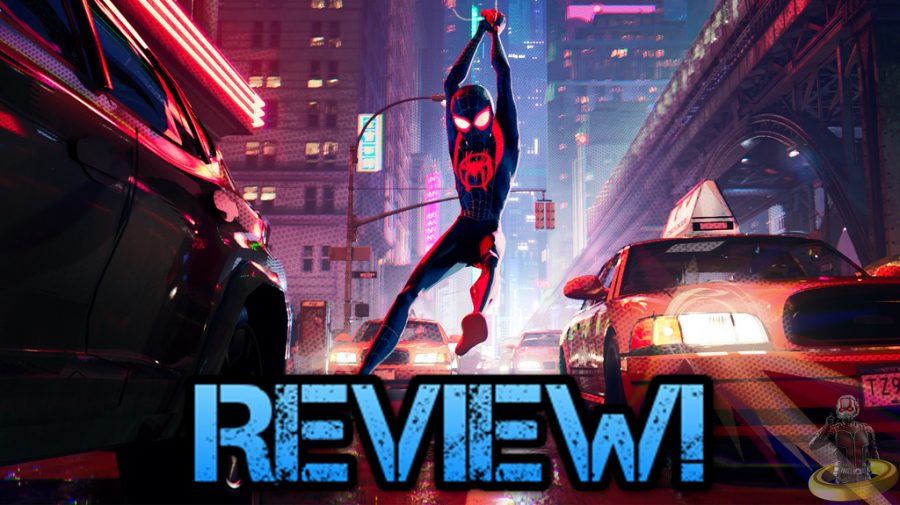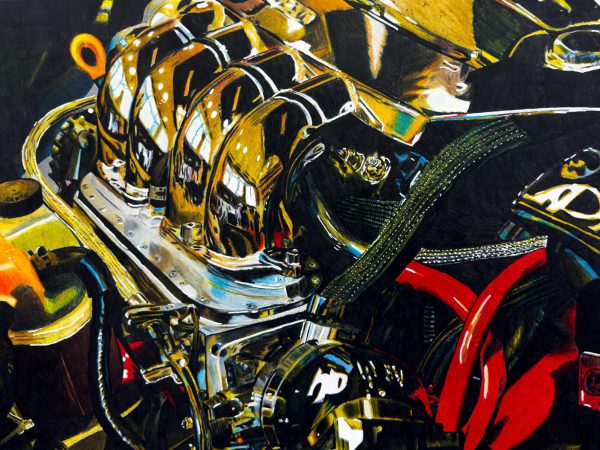Review: Spider-Man: Into the Spider-Verse
Directed by Peter Ramsey, Robert Persichetti Jr., and Rodney Rothman, Spider-Man: Into the Spider-Verse shows us that anyone can be Spider-Man. The budget of $90 million portrays the animation and beautiful comic book inspired art style perfectly, while the semitones and cross hatching for shading is legendary. Not to mention the glorious nod to Steve Ditko’s signature “Ditko Dots,” which I’ll get more in to later. Spider-Man: Into the Spider-Verse is an amazing movie that makes you want to watch it again, even if you already have.
It starts out with Miles Morales and his father Jefferson Davis not seeing eye to eye on Miles’ hobby, graffiti art. Therefore, Miles runs off to meet up with his uncle Aaron, who helps Miles pursue his hobby by bringing him to an abandoned subway station to paint. While painting Miles gets bitten by a radioactive spider that descended from the ceiling, giving him the abilities of Spider-Man as well as camouflage and a ‘venom blast’ (a bioelectric shock). He freaks out and looks for answers, later returning to the abandoned subway station, but he stumbles upon a battle between Spider-Man and the Green Goblin. The subway station hid a secret laboratory for Wilson Fisk, also known as the Kingpin (a lesser known Spider-Man villain), to build a particle accelerator to access other dimensions.
The fact that Miles’ father does not want his son to become a graffiti artist makes sense because he is a police officer. Aaron doesn’t really care about the law, and thinks Miles should do what he cares about. I find it funny that throughout the scene of Miles spray painting the wall, the spider was crawling all over him, and he didn’t feel it. When the spider finally bit him, he just slapped it off casually. When he discovered his powers, I really felt bad for him. He looked like an idiot, so they did a great job of making it believable.
The film really started to get interesting when he returned to the station and found the lab. The visual of Spider-Man swinging around the flying Green Goblin was very impressive. The fluent animation and the constant nods to comic books really brought the movie together; the semitones, cross-hatching, and Ditko Dots. It was spectacular. If you are not familiar with Ditko Dots, they are the signature effect by Steve Ditko. Whenever he draws visible energy, like energy blasts, or explosions, he makes big black dots floating around within. The nod to Steve Ditko’s signature effect is a great tribute and it really shows how much they actually cared about the movie.
Green Goblin and Spider-Man die. The Kingpin has, in a way, won. No more Spider-Man. Miles is given a flash drive to shut down the particle accelerator and is inspired by Spider-Man’s death. He tests his powers by jumping off a short building. He falls, breaking the flash drive in the process. He then meets a Peter Parker from another universe, who is much older and jaded. His aunt May died, he divorced Mary Jane, how worse could it get for him? Now, he’s trapped in another universe and slowly dying, so it could get a bit worse. Spider-Man decides to train Miles reluctantly in return for Miles helping to get a new “goober” (aka flash drive).
All of New York is mourning Spider-Man, and you feel sad as well. New York’s hero, Spider-Man is gone. The speech given by Mary Jane (who was still married to this universe’s Peter) was what inspired Miles to take up the mantle. He has to save New York now. It’s up to him. Miles doesn’t really know what to do as Spider-Man, though. Miles is new to all of this. The powers, the varied villains, and the responsibility. All of these things are something Miles has never experienced before. This is what made him so much more relatable. Anyone could be Spider-Man, but no one is born with it.
Miles learns the Prowler (a bodyguard of Kingpin) is actually his uncle Aaron Davis, and is naturally shocked. There’s a battle that takes place at Aunt May’s house, where Miles reveals his identity to the Prowler. Aaron spares Miles, then is shot and killed by the Kingpin. Miles, later goes back to his dorm room to mourn with the rest of the Spider-People, and they give him a pep talk. The best part is when Spider-Ham tells us the true flaw and humanity of Spider-Man. He says, “Miles, the hardest thing about this job is you can’t always save everybody.” Spider-Man webs Miles to a chair and tells him he’s not ready to face the Kingpin. The rest of the Spider-People go to stop the Kingpin from opening another portal. Miles eventually breaks free and dons his own suit. A sleek, black and red suit.
The suit is an amazing re-design of Miles’ suit from the comics, which looks more homemade and much more believable. Miles just spray-painted Spider-Man’s suit, while in the comics it was given to him by S.H.I.E.L.D. (an organization of government special agent super-heroes, and a whole other can of worms from Spider-Man). It was unnecessarily intricate, and it raises the question of how he would get a new costume if it’s damaged. It is so much better this way. This suit really shows Miles’ character in the movie. He’s a graffiti artist, so he would naturally spray-paint the suit. The addition of Miles’ jacket, shorts, and shoes add more to his look. Plus, it merges his life as Miles and his new life as Spider-Man.
Spider-Man and Miles raid Kingpin’s research facility to get new data for the goober. They have a run-in with Dr. Olivia Octavius (Doctor Octopus), but are saved by Spider-Woman, a Spider-person from another other dimension, where Gwen Stacy becomes Spider-Woman and Peter Parker dies instead. Gwen Stacy was very accurate to the comic book character called Spider-Gwen because of her courageous approach to the role.
She brings them to this universe’s Peter’s house, where Aunt May takes them into a “Spider-Cave” (Spider-Man’s secret headquarters) hidden in her garden shed. They meet 3 more Spider-People. Spider-Man Noir, a Spider-Man from the 1930s and is always in black and white. Peni Parker and her robot Sp//der, who has a telepathic link with the spider who pilots the mech. Finally, there’s Spider-Ham. He’s a pig with spider powers.
I enjoyed Spider-Man Noir because his character was very believable as a sad super hero. In the quote, “I let matches burn down to my fingertips just to feel something,” Noir shows his reaction to the monochrome and Great Depression era that he is from.
The final battle ensues, and Jefferson Davis, Miles’ father, witnesses it all, and actually cheers for Spider-Man this time, not knowing it’s his son that is Spider-Man. Miles defeats the Kingpin and destroys the particle accelerator. Jefferson Davis thanks Spider-Man for his heroic actions and tells him that he hopes they could work together sometime. The movie ends with a narration by Miles, who says, ”Anyone can wear the mask. You could wear the mask. If you didn’t know that before, I hope you do, now. ‘Cause I’m Spider-Man. And I’m not the only one. Not by a long shot.”
These last few lines tell you to your face that you can be Spider-Man. Anyone can be Spider-Man. Miles says it himself. He didn’t know what to do at first, but it came eventually. The powers come with the responsibility. Spider-Man may not be able to save everybody, it only makes the name more human (or pig). If a pig could be Spider-Man, anyone can be Spider-Man.
This movie deserves a perfect score. I enjoyed the plot, story, and character arcs. The cast fit the characters very well as they took the form of their character and held it until the very end. This is one of the best superhero origin stories I have ever seen. The art style looks like you’re opening up a comic book and reading it. I am giving Spider-Man: Into the Spider-Verse an 100/100. It is a very good movie that I would love to watch again.








